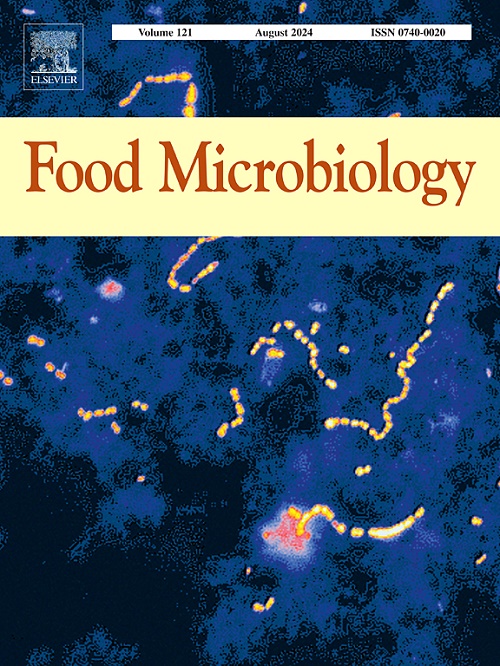Transcriptomic investigation reveals a potential mechanism of white LED irradiation inhibiting the growth and pathogenicity of the blue mold pathogen Penicillium expansum
IF 4.6
1区 农林科学
Q1 BIOTECHNOLOGY & APPLIED MICROBIOLOGY
引用次数: 0
Abstract
LED visible light irradiation demonstrates significant potential for suppressing postharvest pathogens, yet the antifungal efficacy and underlying mechanisms of white light spectrum remain poorly understood. This study systematically evaluated the inhibitory effects of two white LED irradiation intensities (40 and 120 μmol m−2 s−1) against Penicillium expansum through in vitro and in vivo trials, with darkness as the control, while elucidating the mechanistic basis via transcriptomic profiling. In vitro experiments revealed that white LED irradiation effectively suppressed fungal growth and induced substantial disruption of cell membrane integrity. In vivo applications demonstrated that 120 μmol m−2 s−1 irradiation significantly attenuated P. expansum pathogenicity on apple fruits while maintaining optimal fruit quality parameters. Transcriptomic analysis identified irradiation-induced dysregulation of key metabolic pathways, including carbohydrate and lipid metabolism, coupled with impaired cell membrane functionality of P. expansum. We propose a tripartite inhibitory mechanism involving the suppression of energy supply, structural destabilization of cellular membranes, and reduction of virulence factor secretion in P. expansum exposed to 120 μmol m−2 s−1 white LED irradiation. These findings elucidated the effect and mechanism of white light irradiation in inhibiting the growth of P. expansum, demonstrating white LED's potential as an eco-friendly, cost-effective preservation strategy for postharvest apple management.

转录组学研究揭示了白光LED照射抑制蓝霉菌病原菌扩张青霉生长和致病性的潜在机制
LED可见光照射显示出抑制采后病原菌的巨大潜力,但白光光谱的抗真菌效果和潜在机制尚不清楚。本研究以黑暗为对照,通过体外和体内试验系统评价了两种白光LED照射强度(40和120 μmol m−2 s−1)对扩张青霉的抑制作用,并通过转录组学分析阐明了其机制基础。体外实验表明,白光LED照射可有效抑制真菌生长,并导致细胞膜完整性的严重破坏。体内试验表明,120 μmol m−2 s−1辐照能显著降低膨胀芽孢杆菌对苹果果实的致病性,同时保持最佳果实品质参数。转录组学分析发现辐照诱导的关键代谢途径失调,包括碳水化合物和脂质代谢,加上细胞膜功能受损。在120 μmol m−2 s−1白光LED照射下,白光LED可抑制白光LED对白光LED细胞的能量供应、细胞膜结构不稳定和毒力因子分泌减少。这些研究结果阐明了白光照射对苹果生长的抑制作用和机制,证明了白光LED作为一种环保、经济的苹果采后保存策略的潜力。
本文章由计算机程序翻译,如有差异,请以英文原文为准。
求助全文
约1分钟内获得全文
求助全文
来源期刊

Food microbiology
工程技术-生物工程与应用微生物
CiteScore
11.30
自引率
3.80%
发文量
179
审稿时长
44 days
期刊介绍:
Food Microbiology publishes original research articles, short communications, review papers, letters, news items and book reviews dealing with all aspects of the microbiology of foods. The editors aim to publish manuscripts of the highest quality which are both relevant and applicable to the broad field covered by the journal. Studies must be novel, have a clear connection to food microbiology, and be of general interest to the international community of food microbiologists. The editors make every effort to ensure rapid and fair reviews, resulting in timely publication of accepted manuscripts.
 求助内容:
求助内容: 应助结果提醒方式:
应助结果提醒方式:


